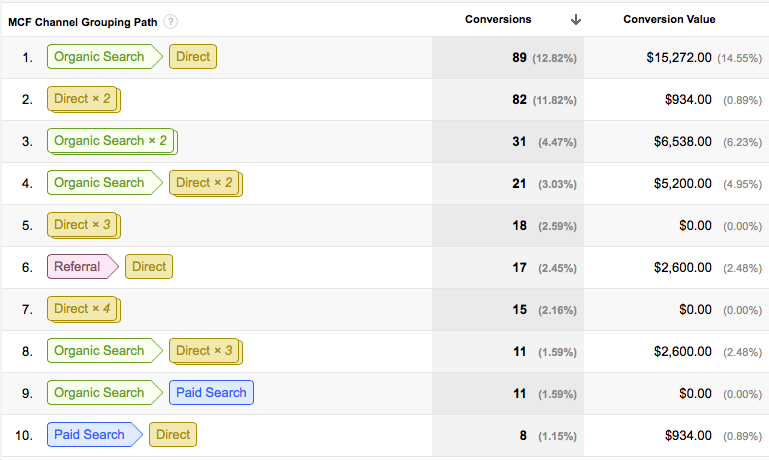 In February, we posted an article about Marketing Performance Measurement and Attribution. In this, he discussed the tricky proposition of tracking offline marketing channels and how it’s important to be able to measure the customer lifetime value (LTV). Much of this is aided by having a good Customer Relationship Management Tool (CRM); but it is also important to make sure you are feeding good data and identifying all the online channels collecting lead generating data.
In February, we posted an article about Marketing Performance Measurement and Attribution. In this, he discussed the tricky proposition of tracking offline marketing channels and how it’s important to be able to measure the customer lifetime value (LTV). Much of this is aided by having a good Customer Relationship Management Tool (CRM); but it is also important to make sure you are feeding good data and identifying all the online channels collecting lead generating data.
Establish a Tracking Strategy
We begin with asking the basic questions:
- What am I tracking?
- Why am I tracking?
- What will I learn?
Any traffic source that arrives at our website should be tracked and many are automatically tagged via an analytics program, typically Google Analytics. This gives us the bedrock of data with which to set up goal funnels. These goals – or actions – can be anything from a form submission to a PDF download to viewing a video. It’s all trackable by virtue of actual page views, virtual page views, event tags and campaign tagging of URLs; so once we’ve established the various ways in which a potential customer can interact with our website we want to make sure these actions filter into the right buckets for further examination, with the goal of being able to generate actionable insights such as:
- Is a form too long?
- Is the call to action weak?
- Does the copy need to be re-written?
- Do visitors leak on a particular step of a checkout?
Establish Tracking Systems
Provided our goals form data is synced up to a CRM, we will not only understand where our site visitors are converting from but be able to track this visitor’s lifetime value. Then if we segment our visitors into email campaign lists we should also be able to track these visitors back to the website and say compare these efforts against paid ads (cpc) for example:

Of course social media is large contributor to our branding and lead nurturing. There are many social media reporting tools that help take the pulse of your social marketing efforts including how many followers, likes, reach and so on but we want to also make sure we are measuring their true impact on the bottom line.

This is where analytics helps yet again by being able to see which social channels are converting and assisting in conversions. A visitor’s journey to get to our site and take an action may be long and winding. Perhaps beginning with an organic search, then viewing one of our social media accounts to then typing our URL directly into the browser address bar before making contact.
So which marketing channel gets the credit for that lead?
Conversion attribution tracking is the answer in order to understand which channels are assisting in generating leads; to use a basketball analogy – the Steve Nash or John Starks of conversions.

Social media conversions can also be tracked against paid advertising. For instance Facebook offers its own native conversion tracking pixel that means you can set up ad campaigns with the sole purpose of being able to track sign ups to our website or Facebook app installs. This then allows to keep a close eye on the cost per acquisition of that lead and monitor reach and cost. Twitter has also now opened up it’s own native conversion tracking for advertisers.

Establish Tracking Programs
Once we have established what we want and need to track to effectively manage our marketing spend and put into place the systems in order to do this effectively, we mist then initiate our program.
To learn more about Marketing Performance Measurement and Attribution, please feel free to contact us.


